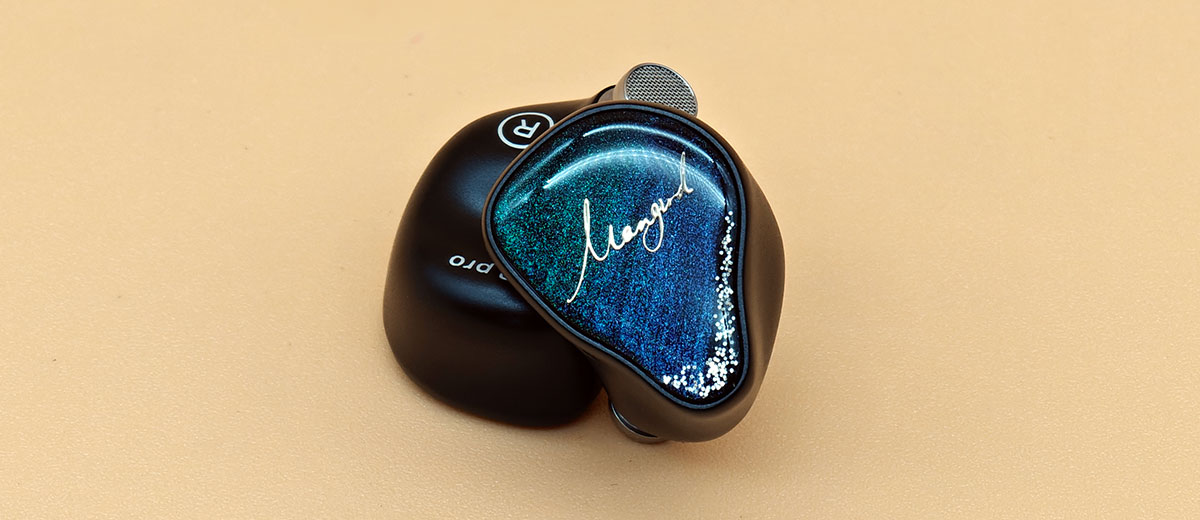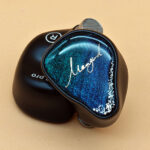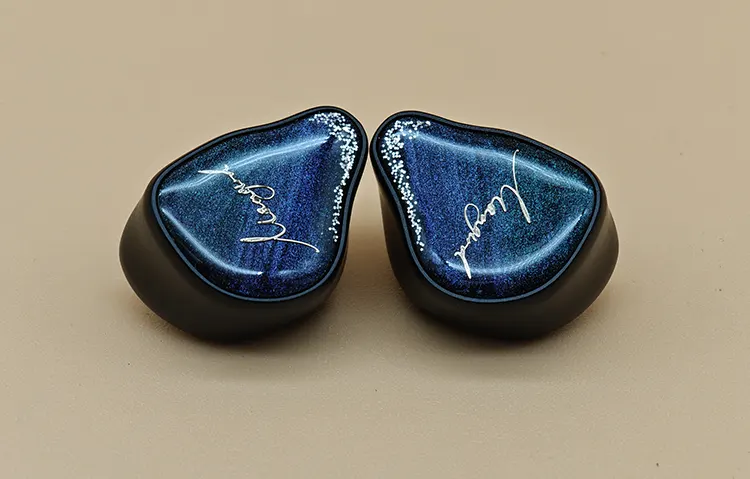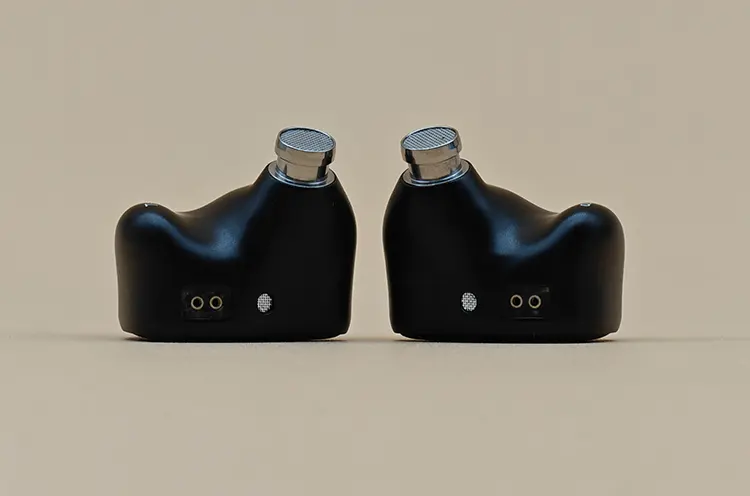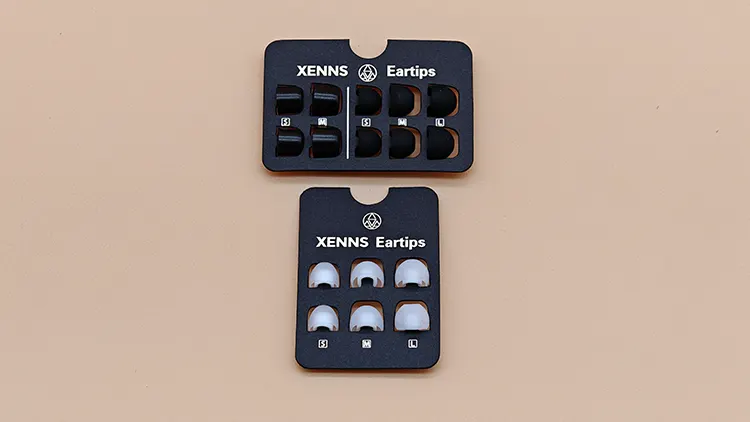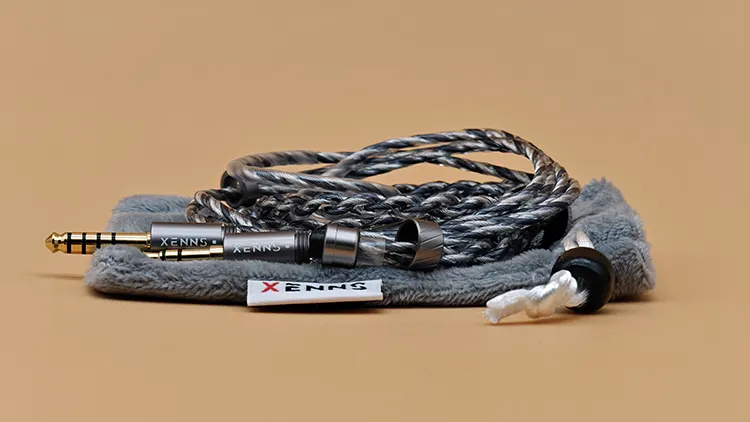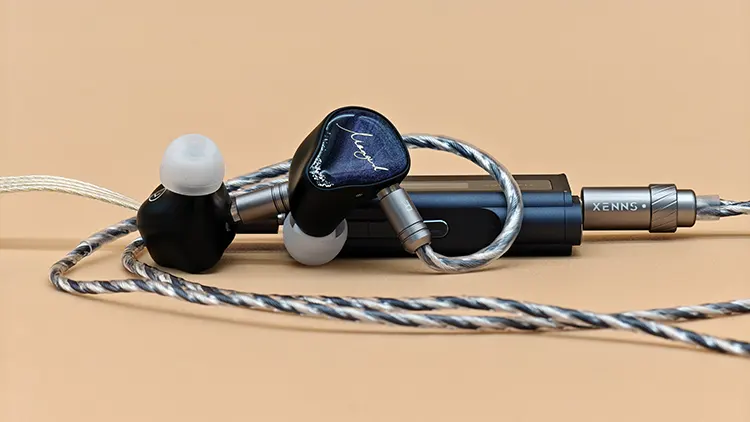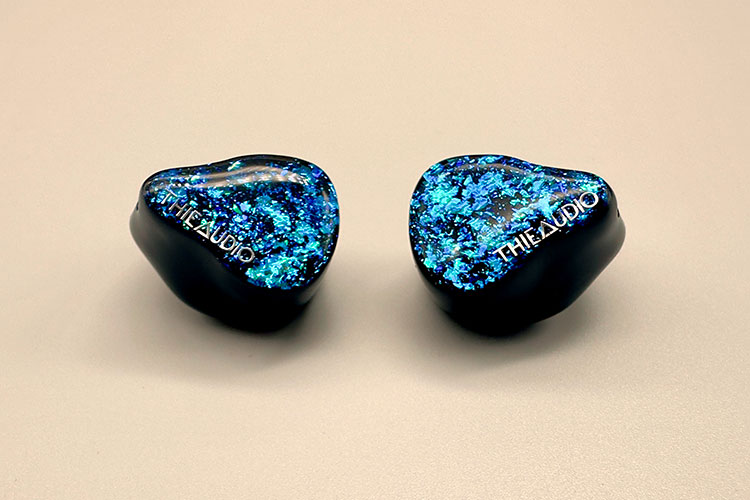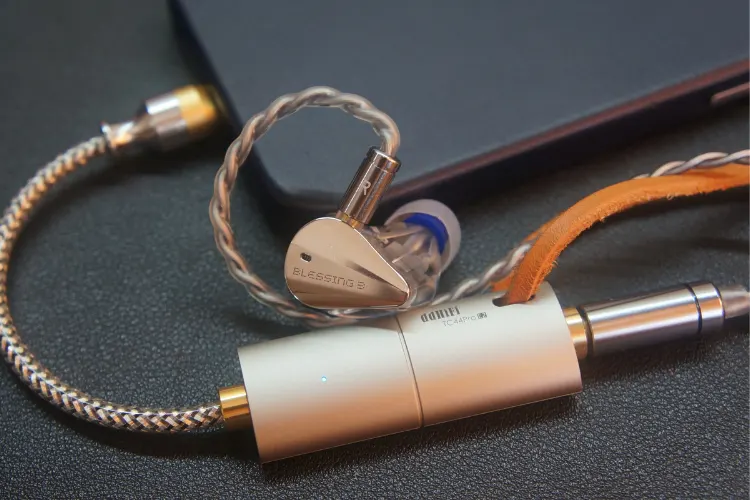Today, Kurt reviews the XENNS Mangird Tea Pro, a 2nd edition hybrid dual 8mm dynamic and 6 BA driver universal in-ear monitor priced at $359.
Disclaimer: This sample was sent to me in exchange for my honest opinion. Headfonics is an independent website with no affiliate links or status. I thank Linsoul for their support.
Click here to learn more about the XENNS Mangird products we have previously reviewed on Headfonics.
Note that this post follows our current scoring guidelines which you can read in more detail here.
XENNS Mangird has been a long-time popular IEM manufacturer in the audio community. Their previous IEMs, the Mangird Tea and Tea2, up to their high-end XENNS Up were highly regarded for their innovative tuning.
Now we have a new entry in the Tea lineup called the XENNS Mangird Tea Pro featuring an upgraded multi-driver setup and a $349 price tag that matches the previous Tea2 from 2 years ago.
Will it continue the excellent legacy of the Tea lineup or will it be a mediocre set that everyone forgets? I find out in my full review below.
Features
The Mangird Tea Pro is packed with a hybrid dual dynamic and 6 BA driver setup custom-made for XENNS.
The dual 8mm dynamic drivers are fitted with a bio-composite diaphragm reinforced with an improved membrane structure designed to improve the sub-bass response.
The 6 balanced armature drivers consist of 2 Knowles drivers, 2 RAF drivers, and a single RDB composite driver. These new upgraded drivers were brought in to improve the natural timbre and texture of the sound.
The Tea Pro is rated with an impedance of 13Ω and an SPL of 104 dB/Vrms @1kHz, a rating I felt might be less efficient than some but turned out to be a fairly easy IEM to drive with good volume headroom from weaker sources.
Design
The XENNS Mangird Tea Pro combines all the designs of their previous IEMs, such as the Tea, Tea 2, and the Top. The hybrid outcome is this new two-tone Northern Lights faceplate design.
Some could interpret its glittery design as a Van Gogh painting, which I could understand but in person, it is more impressive since the green-violet colors shift under different lighting conditions.
Shining a light on top or to the side allows the faceplate to make subtle shifts between violet and green hues which is a neat touch.
Unfortunately, the main shell’s opaque black color doesn’t follow the design choice of the faceplate which would have been perfect.
In its center, it has that signature Mangird name printed in gold, and on its side, there are tiny golden dots that decorate the faceplate like the stars in a night sky.
Comfort & Isolation
Considering the dual dynamic drivers inside I expected the XENNS Mangird Tea Pro to be a large IEM but fortunately, it isn’t that big or intrusive in my ear.
I would consider it to have the correct, even perfect, size for my ears. The contoured shape of the shell is a big factor since it slides in without any discomfort.
Compared to other multi-BA IEMs, the Tea Pro is one of the most comfortable I have tried. I’m not sure how XENNS Mangird made this IEM so comfortable but they nailed it.
With great fit comes great isolation. The Tea Pro has one of the best passive noise isolation experiences I’ve experienced for a hybrid IEM or perhaps any IEM at this price point.
Ear Tips
The XENNS Mangird Tea Pro comes with 3 types of ear tips including memory foam, basic silicone tips, and powdery silicone tips in the box.
I wouldn’t use the foam tips unless you prefer having no bass and worse detail retrieval. I also wouldn’t use the basic silicone tips unless the powdery silicon tips make your ears itch.
The white powdery tips are the ones I would recommend using as they provide the best sound experience and the comfiest feeling and fit.
Stock Cable
The XENNS Mangird Tea Pro is packaged with a thick yet classy-looking stock cable. Like its faceplate, its aesthetics are a braided mix of dark blue and silver.
It’s also a modular cable with 3.5mm and 4.4mm plugs but sadly no 2.5mm TRRS plugs though it’s becoming a less popular choice these days.
The cable is finished with metal plug barrels and matching chin sliders giving it a nice overall premium feel during handling.
The only problem I have with the cable is its higher-than-average stiffness. It is difficult to straighten it out so the cable is always bent or curved even if I try to move it.
Packaging & Accessories
The unboxing experience of the XENNS Mangird Tea Pro is exceptional. The colors, accessories, and opening of the boxes give a proper unboxing experience.
Getting in the box, we’re greeted with a gorgeous blue color scheme. It reminds me of an Icelandic sky view from the mountain and is simply gorgeous.
Beyond a double-door opening experience from the inside, you get the XENNS Mangird Tea Pro, accessories box, and the carrying case hidden behind the flaps. The accessories and carrying case are also colored the same blue as the box. The Tea Pro is also covered with a thin plastic layer out of the box.
Inside the accessories case, we get the tips, a nozzle brush, and an IEM clip. Meanwhile, the carrying case houses the cable along with the plugs.
Overall, the carrying case is high quality as well. The only issue some might have is that the space isn’t that big which might make your DAC or dongle not fit in it.
Sound Impressions
Bass
The bass is impressively detailed but pleasingly it is not too heavy-handed either. It leans more toward an audience wanting a more detailed bass experience than one that showers you with bass volume.
The XENNS Mangird Tea Pro emphasizes the sub-bass more which suits my taste more than just the mid-bass punch and a lack of low-end rumble. The Tea Pro does magic by elevating its sub-bass to being always present.
No matter the music I’m listening to, I always experience some kind of low-end rumble with it. I did not feel it to be intrusive at all, rather it was an experience that I found addictive.
The midbass doesn’t disappoint either with its punch and slam somehow sneaking its way into every track I listen to using the Tea Pro.
Overall the Tea Pro’s sense of slam and punch is great but I do know that some might prefer more midbass for a stronger slam and punch sensation which I understand.
Mids
This is the 5-star feature of the XENNS Mangird Tea Pro tuning. I can describe the mids of the Tea Pro as ‘Claire de Lune’ transforming into an IEM.
It is simply lush, natural, and ethereal. The warmth in the vocals feels like a hug on a cold winter night. The Tea Pro squeezes out all the details from the vocals. The breathing, lip-smacking, and other sounds they make are all audible with the Tea Pro.
The mids are not bright, shouty, or tinny, retaining a balanced and natural tone like the previous Tea series IEMs. This is a crystal clear sound with a transparent vocal presentation.
With how refined the vocals are, both male and female vocals have that extra smoothness in their delivery. Combine that with the highly textured and one of the most correct timbres I have heard from an IEM, it lacks nothing.
Treble
Despite not having any EST drivers to handle the higher frequencies, the XENNS Mangird Tea Pro can compete with IEMs that use them. Its treble is wonderfully extended with abundant sparkle, air, and brilliance.
Detail retrieval isn’t one of its strongest points, however, since some micro detail seems weak or even muted. It’s present, but it’s not as audible as some competing IEMs
The treble is more relaxed but to that non-fatiguing nature, sibilance doesn’t exist here as well. Wearing this all day is a non-issue due to its laid-back tuning.
Staging & Dynamics
Soundstage and imaging are great on the XENNS Mangird Tea Pro. To my ears, they have been improved compared to the previous Tea series.
I hear better width, proper height, and depth making it a more immersive listening experience than the older models. The positioning of instruments, vocals, and other sounds is pinpoint and precise.
I can hear the sounds playing all around me quite well. Even below my ears, I can pick up some nuanced detail due to its precise positioning.
Lastly, the separation is impressively clean. The layering of instruments can be distinguished with ease.
Synergy
The XENNS Mangird Tea Pro is surprisingly easy to run despite being a hybrid IEM. I expected it to require me to use a balanced output pairing from a Dongle DAC to achieve decent loudness but that wasn’t the case.
The 104 dB SPL rating is low enough to avoid hissing or static from amps with high gain while its low impedance will present no challenge for the output power from weaker sources.
Using the XENNS Mangird Tea Pro on any device is a treat. I didn’t encounter any issues with it on any source or medium I’ve used.
I’ve used it on my budget phone with a 3.5mm jack at around 55% loudness but I got my ideal listening experience while observing negligible battery consumption.
Using it with my Colorfly CDA-M2 gave me the best experience in terms of maximizing the dynamic range and resolution of the Tea Pro on low-volume listening sessions. Both the FiiO JA11 and KA11 gave me similar performances with only a small increase in volume levels.
Select Comparisons
THIEAUDIO Hype 4
Technical
The Hype 4 has a similar driver setup as the Hype 2 with a dual dynamic driver BA driver configuration though this time it is 4 drivers as opposed to 6.
It still utilizes THIEAUDIO’s Impact2 technology for the dynamic drivers, which means they are configured as an isobaric design. The balanced armatures have been updated to the latest Sonion E50 series and the 26A series drivers.
It has a 17Ω impedance rating and a 105 dB/Vrms sensitivity which makes it fairly easy to power. I wouldn’t worry about needing a balanced 4.4mm here either.
Design
The Thieaudio Hype 4 features 3 different design options. Basing off on color only, you get black-blue, purple-white, and purple-blue choices.
The faceplate of the purple-blue one has a more abstract wavy design, the black-blue one has its blue color sprinkled on top of it. The purple-white has the most unique design with its gem-like faceplate and white shell. The blue ones have a black shell on the other hand.
Performance
Both of these IEMs have a focus on the sub-bass to give a premium rumble experience. Their midbass performance is similar as well, but the Hype 4 feels stronger and more enjoyable overall. The Tea Pro’s bass sounds higher quality due to it sounding noticeably cleaner and precise.
The midrange of the Hype 4 sounds leaner than the Tea Pro’s mids. It lacks substance compared to the thicker and fuller midrange of the Tea Pro.
Their respective treble tuning is quite different also. The Hype 4 focuses on brilliance and sparkle while the Tea Pro prefers more detail retrieval.
Neither IEM has any sibilance issues, but the Hype 4’s treble does get peaky and sharp. It gets fatiguing compared to the relaxed yet extended treble of the Tea Pro.
Both IEMs offer above-average macro staging capability with good height and depth perception. However, the Tea Pro’s imaging is more precise with clearer layering and separation of the two presentations.
Moondrop Blessing 3
Technical
The Moondrop Blessing 3 has a similar driver setup to the Thieaudio Hype 4 with a dual dynamic and quad-balanced armature driver configuration.
The 2 dynamic drivers use the H.O.D.D.D.U.S. system to create an isobaric structure. The 4 BA drivers are split to handle the mids and treble.
The balanced armatures used on the Tea Pro are also the latest generation drivers, unlike the generation-old variants inside the Blessing 3.
The Blessing 3 has a 14.8Ω impedance rating with an SPL of 120 dB/Vrms, similar to the previous Blessing series. The sensitivity could be lower to prevent any hissing but loudness isn’t an issue.
Design
The Moondrop Blessing 3 has a metallic and large build. It kept the previous design of the Moondrop Blessing 2 with that large transparent shell revealing the drivers underneath. Unlike the Blessing 2, it now uses steel faceplates as opposed to wooden faceplates.
This is a fingerprint magnet though, so beware of that. There’s a vent on top of the plate with either the word Moondrop or Blessing 3 engraved.
Performance
Both IEMs have top-of-the-line detail retrieval compared to their peers. Their staging and imaging are also on par with each other. I’d say the width of the Blessing 3 is wider but the depth and height of the Tea Pro is more immersive.
The Blessing 3 treble energy can get fatiguing whereas the Tea Pro highs always remain relaxed. For their mids, the biggest difference is their note weight. The Blessing 3’s midrange is quite shouty and noticeably thin while the Tea Pro has a thick midrange with zero shout.
Timbre is just done better and more naturally on the Tea Pro. Unfortunately, it sounds too sharp and artificial on the Blessing 3.
Bass is where the Tea Pro leaves the Blessing 3 in the dirt. Despite both of them having 2 dynamic drivers, the Blessing 3 leaves me wanting more bass.
The Blessing 3 sounds too dry compared to the Tea Pro whose tuning always finds a way to give me a satisfying rumble or slam. Some will prefer the leaner MOONDROP bass so it might be your cup of tea.
My Verdict
The XENNS Mangird Tea Pro is a proper successor to the original Tea lineup. With an extra dynamic driver and improved balanced armature performance, this universal IEM is tuned for excellence.
If you’re in the market for a hybrid IEM, going with the Tea Pro is a smart decision. You will get addictive bass, great clarity, and upgraded technicalities over the older models, making it a winner against its competitors and even competing above its price range.
XENNS Mangird Tea Pro Technical Specifications
- Driver Type: Two (2x) 8mm dynamic drivers, Two (2x) Knowles RAD 33518 balanced armatures, Two (2x) RAF 32873 balanced armatures, and One (1x) RDB 34834 composite driver
- Plug: Modular 3.5mm unbalanced, 4.4mm balanced
- Frequency Response: 20Hz – 22kHz
- Impedance: 13@1kHz
- Sensitivity: 104 dB/Vrms

